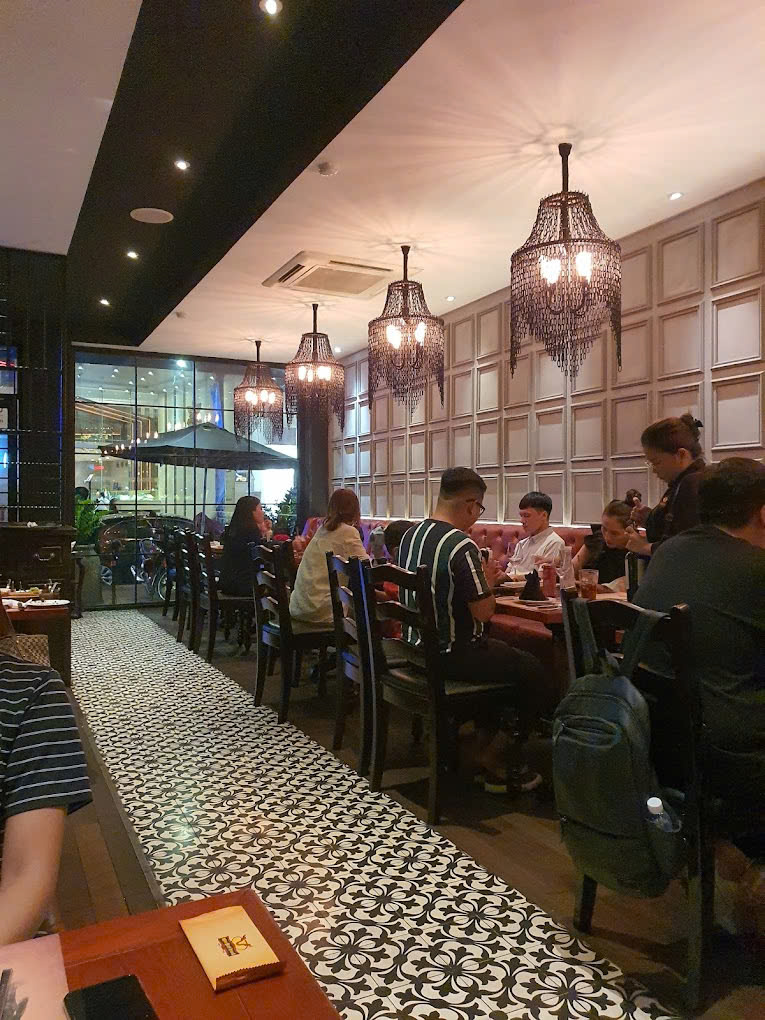Back to Blog

Market Research Report: Dining Preferences of Young Vietnamese Consumers and Strategic Recommendations for Foreign Restaurant Expansion in Ho Chi Minh City (HCMC)
by
Tri Pham
on
November 14, 2024
1. Introduction
- Objective: This report analyzes the dining behavior of young Vietnamese consumers in HCMC to guide a foreign restaurant’s strategic market entry, focusing on preferred cuisines, ideal location, pricing, marketing channels, and customer retention.
- Target Audience: Young consumers aged 18-35, a group known for their active dining habits and openness to new culinary experiences. Their preferences and behaviors are backed by data from recent surveys, observational studies, and industry trend reports.
2. Dining Preferences of Young People in HCMC
- Popular Cuisines: Research shows that Vietnamese youth are drawn to a diverse array of cuisines. They favor:
- International Flavors: Fast food (e.g., burgers, pizza) and Asian cuisines (notably Japanese and Korean), which are perceived as trendy and align with their interest in international culture.
- Fusion and Experiential Dining: Fusion menus and themed dining experiences are in high demand, appealing to the desire for both novelty and aesthetic appeal.
- Dining Venues: Observational data indicate that young consumers frequent mid-range dining establishments, including cafes, casual dining restaurants, and street food stalls, with strong foot traffic in central and trendy urban districts.
- Key Dining Trends: Health-conscious dining, aesthetically pleasing presentations, and value-driven options are critical, as they align with the lifestyle preferences and spending capacity of this demographic.
3. Location Analysis for a Foreign Restaurant in HCMC
- Ideal Districts for Entry:
- District 1: As HCMC's central business district, District 1 is a prime location for high-visibility establishments. Its dense mix of office spaces, shopping areas, and tourist attractions draws both locals and international visitors. This district is recommended for its guaranteed high foot traffic and strong potential for brand exposure.
- District 3: Known for a vibrant cafe and dining scene, District 3 is popular among local youth and expats who seek a blend of trendiness and familiarity. This area can support a restaurant targeting both younger locals and an international audience interested in trendy, accessible dining options.
- District 7 (Phu My Hung): This affluent district has a high concentration of expats and upper-middle-class residents. It is particularly favorable for restaurants positioning themselves as premium or mid-upscale dining spots, catering to higher spending.
- Recommendation: Given the restaurant’s need for visibility and foot traffic, District 1 is the optimal choice for an initial launch. District 3 is a strong secondary option for attracting both locals and expats in a vibrant, less commercial atmosphere.
4. Pricing Strategy
- Average Spend Per Dish: Data from the latest consumer spending studies indicate that young consumers in HCMC typically spend 80,000 - 200,000 VND ($3.50 - $8.50) per dish. This range reflects their tendency to seek value in the dining experience, balancing affordability with quality.
- Recommended Price Point: A pricing strategy targeting 100,000 - 150,000 VND per dish would align well with the spending habits of young diners while allowing for a balanced perception of affordability and quality. This range positions the restaurant competitively in the mid-market segment, attracting cost-conscious diners without compromising perceived value.
5. Marketing Channels and Strategy
- Primary Marketing Channels:
- Social Media Platforms: Young consumers are highly active on Instagram, Facebook, and TikTok. These platforms are essential for reaching a wide audience through visually engaging content, as 74% of users in this age group report following food-related accounts.
- Food Delivery Apps: GrabFood, ShopeeFood, Capichi are widely used by young consumers. Collaborating with these platforms not only drives online sales but also boosts brand visibility.
- Strategic Recommendations:
- Influencer Partnerships: Collaborate with popular food bloggers or influencers to leverage their following and tap into established trust within the market. Influencers specializing in lifestyle and dining content can amplify brand awareness and create buzz among target consumers.
- Campaigns and User-Generated Content: Research indicates that user-generated content increases brand loyalty by 28% in this demographic. Encourage diners to post about their experience, using branded hashtags or offering small incentives like a free drink or dessert.
- Seasonal or Themed Promotions: Create limited-time discounts or themed events to appeal to the “limited edition” mindset that drives this demographic’s dining decisions.
6. Customer Loyalty and Retention Strategies
- Digital Loyalty Programs: Insights from a recent customer loyalty study indicate that digital loyalty programs increase customer return rates by 36% in the Vietnamese market. Implementing a points-based program, where repeat visits are rewarded, can effectively build customer loyalty.
- Personalization: Young consumers respond well to personalized communication. This can include birthday discounts, exclusive invites to tasting events, or personalized menu recommendations based on past orders.
- Exclusive Events and Engagement: Holding periodic events (e.g., tasting sessions or new menu launches) exclusively for loyal customers fosters a sense of community and exclusivity. This strategy aligns with the trend of building a “tribe” around brands, which is particularly effective among younger diners who seek brand engagement.
Conclusion
This research-backed report highlights key insights into the dining preferences of young Vietnamese consumers and provides data-driven recommendations to support a foreign restaurant's entry into the HCMC market. By targeting the right location, aligning menu pricing with spending habits, leveraging popular digital marketing channels, and implementing effective loyalty programs, a foreign restaurant can establish a strong foothold and foster a loyal customer base in this competitive landscape.
Back to Blog
